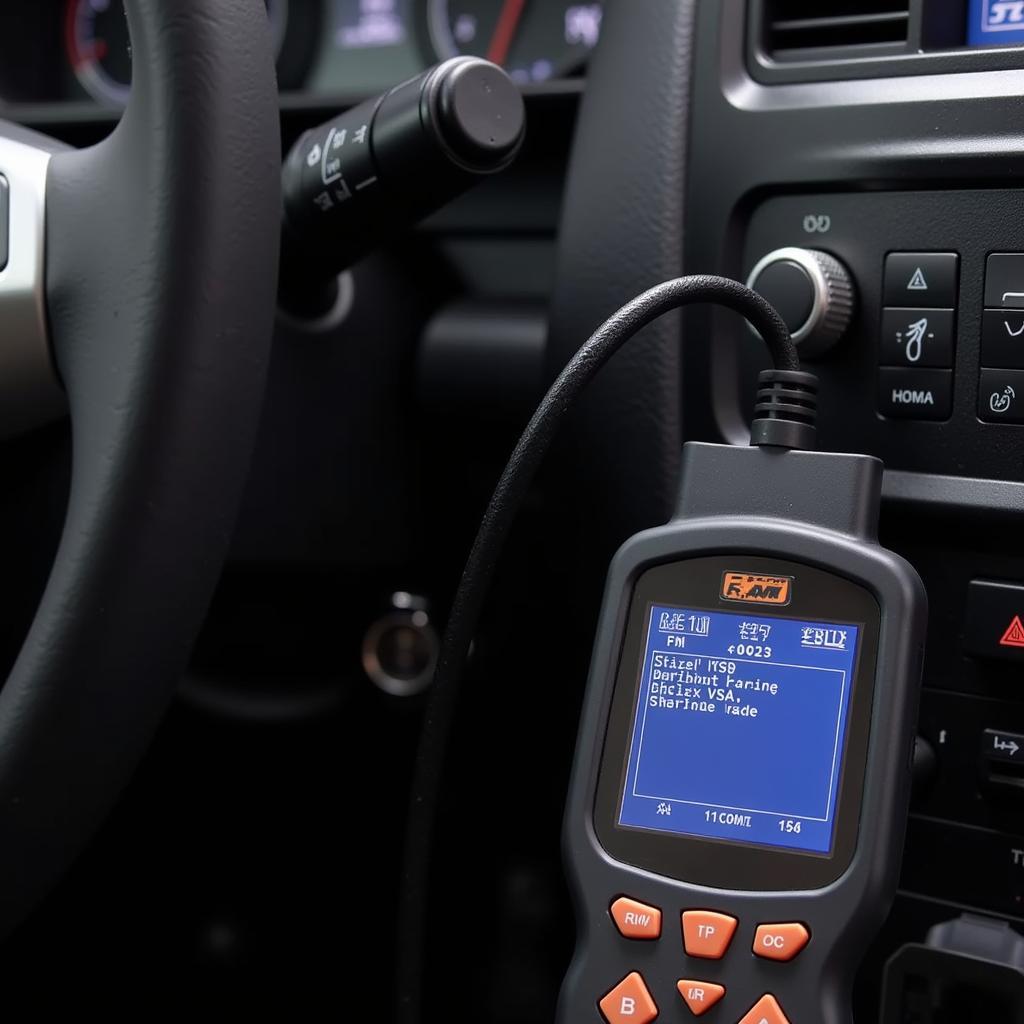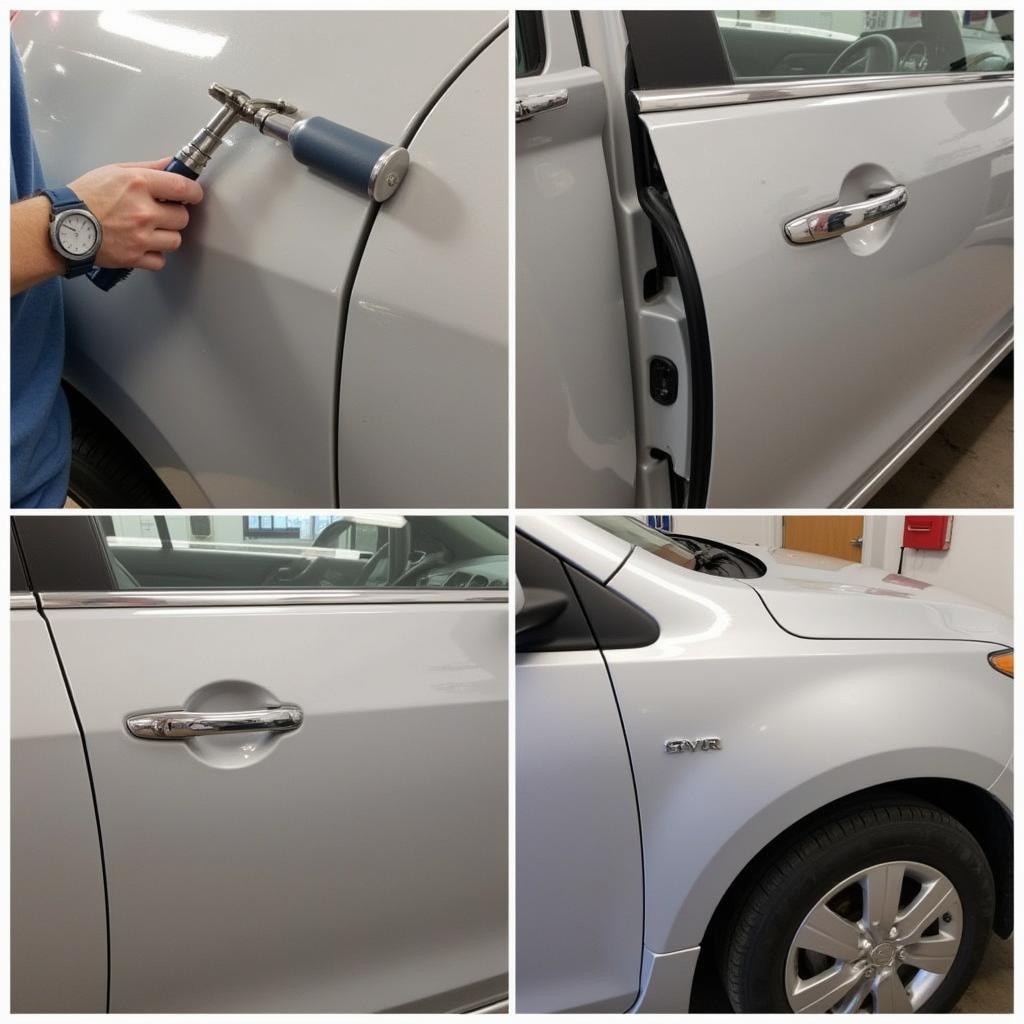The dreaded VSA light glaring at you from your dashboard? A Vsa Car Problem can be unnerving, but understanding its root causes can save you time, money, and potential headaches. This comprehensive guide will delve into the intricacies of the Vehicle Stability Assist system, common issues that trigger the VSA light, and practical troubleshooting steps you can take.
What is Vehicle Stability Assist (VSA)?
Vehicle Stability Assist, often referred to as Electronic Stability Control (ESC) or Electronic Stability Program (ESP), is a crucial active safety system designed to prevent loss of control during cornering or slippery conditions. VSA constantly monitors various sensors, including wheel speed, steering angle, and yaw rate, to detect potential skids or slides. If the system senses instability, it automatically intervenes by applying brakes to individual wheels and adjusting engine power to help maintain vehicle control and keep you on your intended path.
Think of it as an invisible guardian angel, subtly working in the background to keep you safe, especially in challenging driving situations.
used car problems within 30 days bc
Common Causes of VSA Car Problems
Several factors can trigger the VSA light to illuminate, signaling a potential problem with the system. These range from simple issues to more complex malfunctions. Some common culprits include:
-
Faulty Wheel Speed Sensors: These sensors provide crucial data to the VSA system. A malfunctioning sensor can disrupt the system’s ability to accurately assess wheel speed and trigger the VSA light.
-
Steering Angle Sensor Issues: The steering angle sensor tells the VSA system the direction you’re intending to steer. A faulty sensor can lead to inaccurate readings and activate the VSA light.
-
Low Tire Pressure or Uneven Tire Wear: Significant differences in tire pressure or uneven tire wear can affect wheel rotation and trigger the VSA system.
-
Brake System Problems: Issues within the braking system, such as worn brake pads or a malfunctioning ABS system, can interfere with the VSA’s ability to control wheel braking.
-
Malfunctioning Yaw Rate Sensor: This sensor measures the vehicle’s rotation around its vertical axis. A faulty yaw rate sensor can misinterpret vehicle movement and trigger the VSA light.
-
Wiring or Connector Problems: Damaged or corroded wiring or connectors can disrupt communication between the various VSA components, leading to malfunctions.
Troubleshooting VSA Car Problems
While a visit to a qualified mechanic is often recommended for VSA issues, some basic troubleshooting steps can help identify the problem or rule out simple fixes:
-
Check Tire Pressure: Ensure all tires are inflated to the recommended pressure.
-
Inspect Tires for Uneven Wear: Look for signs of uneven tire wear. If present, tire rotation or replacement may be necessary.
-
Check Brake Fluid Level: Low brake fluid can affect brake performance and trigger the VSA system.
-
Visually Inspect Wiring and Connectors: Look for any obvious signs of damage or corrosion to the wiring and connectors associated with the VSA system.
-
Use an OBD-II Scanner: An OBD-II scanner can retrieve diagnostic trouble codes (DTCs) related to the VSA system, providing valuable insights into the problem’s root cause.
“Often, a simple tire pressure check can resolve a VSA issue,” says John Smith, a seasoned automotive technician with over 20 years of experience. “But if the problem persists, a thorough diagnostic check is crucial.”
 Using an OBD-II scanner to diagnose a VSA car problem
Using an OBD-II scanner to diagnose a VSA car problem
[used car problems within 30 days bc](https://autotippro.com/used-car-problems-within-30 days-bc/)
Why is My VSA Light On?
The VSA light serves as an indicator that something within the Vehicle Stability Assist system requires attention. It’s essential to address the issue promptly as a malfunctioning VSA system can compromise your safety, especially in adverse driving conditions.
What Should I Do if My VSA Light is Flashing?
A flashing VSA light indicates that the system is actively intervening to maintain vehicle stability. This typically occurs during slippery conditions or when the vehicle is near its handling limits. While not always an immediate cause for concern, it’s crucial to adjust your driving accordingly, reduce speed, and avoid abrupt maneuvers.
Can I Drive with the VSA Light On?
While you can technically drive with the VSA light on, it’s strongly discouraged. A persistent VSA light indicates a potential problem with the system, which could compromise your safety. It’s always best to have the issue diagnosed and resolved by a qualified technician as soon as possible.
“Ignoring a persistent VSA light is like driving without a safety net,” warns Maria Garcia, a certified automotive engineer specializing in vehicle safety systems. “It’s better to be safe than sorry.”
Conclusion
A VSA car problem, signaled by the illuminating VSA light, shouldn’t be taken lightly. Understanding the system’s functionality, common issues, and basic troubleshooting steps can empower you to address the problem effectively. While some simple checks can sometimes resolve the issue, a professional diagnosis is often the best course of action to ensure your vehicle’s safety and performance. For further assistance or to schedule a VSA system check, contact AutoTipPro at +1 (641) 206-8880 or visit our office at 500 N St Mary’s St, San Antonio, TX 78205, United States. We are here to help you keep your vehicle in optimal condition.





Leave a Reply